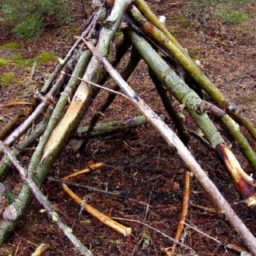In a world filled with uncertainties, it is crucial to equip yourself with the essential survival skills. From navigating through the wilderness to facing unforeseen emergencies, knowing these skills can make all the difference in ensuring your safety. Whether it’s lighting a fire, finding clean water, or constructing a shelter, mastering these fundamental techniques will empower you to face any challenge that comes your way. So, let’s embark on a journey to discover the vital survival skills that will prepare you for the unexpected.
Finding and Purifying Water
Identifying water sources
In a survival situation, finding a reliable source of water is crucial. You can start by looking for natural water sources such as rivers, streams, and lakes. These bodies of water are likely to provide a steady supply of fresh water. Additionally, keep an eye out for signs of vegetation, as plants often grow near water sources. By observing the environment, you can identify subtle changes in the landscape that may indicate the presence of underground water, such as wet spots or lush vegetation.
Collecting and storing water
Once you have located a water source, it is important to collect and store water properly. One method is to use a container, such as a plastic bottle or a hollowed-out gourd, to gather water. If there are no suitable containers available, you can fashion one from natural materials like bamboo or animal bladders. Remember to filter out any debris or particles from the water using a piece of cloth or a makeshift filter.
Storing water is equally important, as it ensures a supply of clean water in case the source becomes inaccessible. Look for watertight containers or consider using natural resources like large leaves or animal skins to create a makeshift storage vessel. Be mindful of evaporation and contamination, so it is advisable to cover the containers and store them in a cool and shaded area.
Methods of water purification
In many wilderness situations, water sources may be contaminated with harmful bacteria and parasites. Therefore, it is crucial to purify the water before consumption. There are several methods you can use to ensure the water is safe to drink.
Boiling is one of the simplest and most effective methods of water purification. By bringing the water to a rolling boil for at least one minute, you can kill most microorganisms that might be present. Another method is to use water purification tablets or drops, which are readily available in outdoor stores. These tablets or drops contain chemicals that neutralize bacteria and viruses, making the water safe to drink.
If you don’t have access to these methods, you can resort to using a portable water filter. These filters work by physically removing impurities and microorganisms from the water. They are lightweight, compact, and can be a valuable tool in a survival situation.
Remember, purifying water is essential to prevent waterborne illnesses, so always prioritize this step before consuming any water in the wild.
Building Shelter
Choosing a suitable location
When it comes to building a shelter in the wilderness, the location plays a vital role in your safety and comfort. Look for a spot that provides natural protection from the elements, such as strong winds and extreme temperatures. Seek out areas protected by natural features like trees, caves, or rock formations.
Avoid setting up camp in low-lying areas that may be prone to flooding or pooling water. These areas can not only make you uncomfortable but also increase the risk of hypothermia or other weather-related injuries. Instead, choose higher ground that offers good drainage.
Additionally, consider the availability of resources like firewood and water in close proximity to your chosen location. Having these essential resources nearby will make your stay in the wilderness more manageable and sustainable.
Types of natural shelters
Nature often provides us with materials to create shelter, and understanding different types of natural shelters can be a valuable survival skill. One common natural shelter is a lean-to, which involves propping up a large branch or log against a sturdy support, such as a tree or rock wall. This creates a slanted roof, providing protection from rain and wind.
Another option is a debris hut, which is built by stacking branches and leaves against a frame made of logs or rocks. The vegetation acts as insulation and helps retain body heat, making it an effective shelter in colder climates.
Caves can also serve as natural shelters, providing both protection and insulation. However, make sure to thoroughly inspect the cave for any potential dangers, such as wildlife or unstable structures, before deciding to seek refuge inside.
Constructing a shelter using available materials
In case you can’t find a suitable natural shelter, it is crucial to know how to construct one using available materials. Look for fallen branches, tree limbs, or even large leaves that can serve as building materials.
For a simple lean-to, find a sturdy tree or rock formation and prop a long branch against it. Cover the frame with smaller branches or leaves to provide protection from the elements. If you have access to a tarp or a piece of plastic, you can use it as an additional barrier against rain and wind.
In colder climates, consider building a snow shelter, such as an igloo or a snow cave. These types of shelters provide excellent insulation and can help retain body heat. They require specific construction techniques, so it is important to familiarize yourself with them beforehand.
Remember, building a shelter takes time and effort, but it is a crucial step in ensuring your survival. Always prioritize finding or constructing a shelter whenever you find yourself in a wilderness survival situation.
